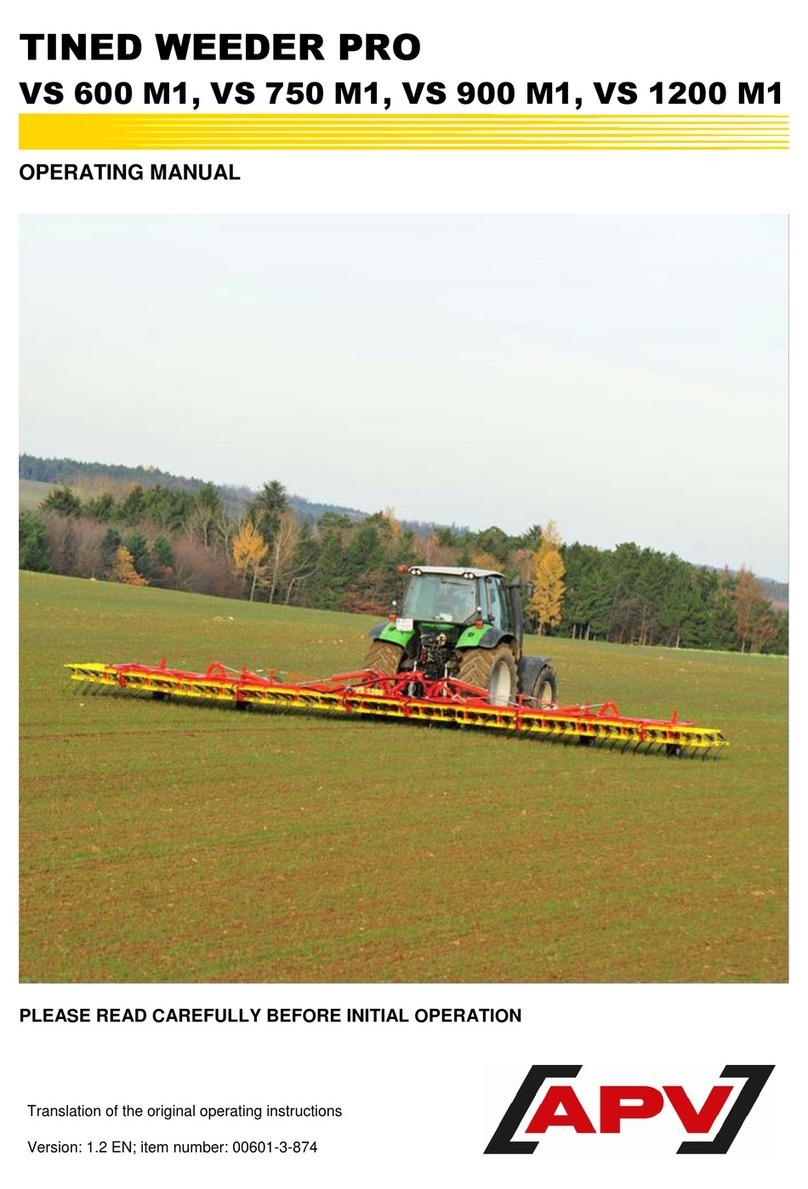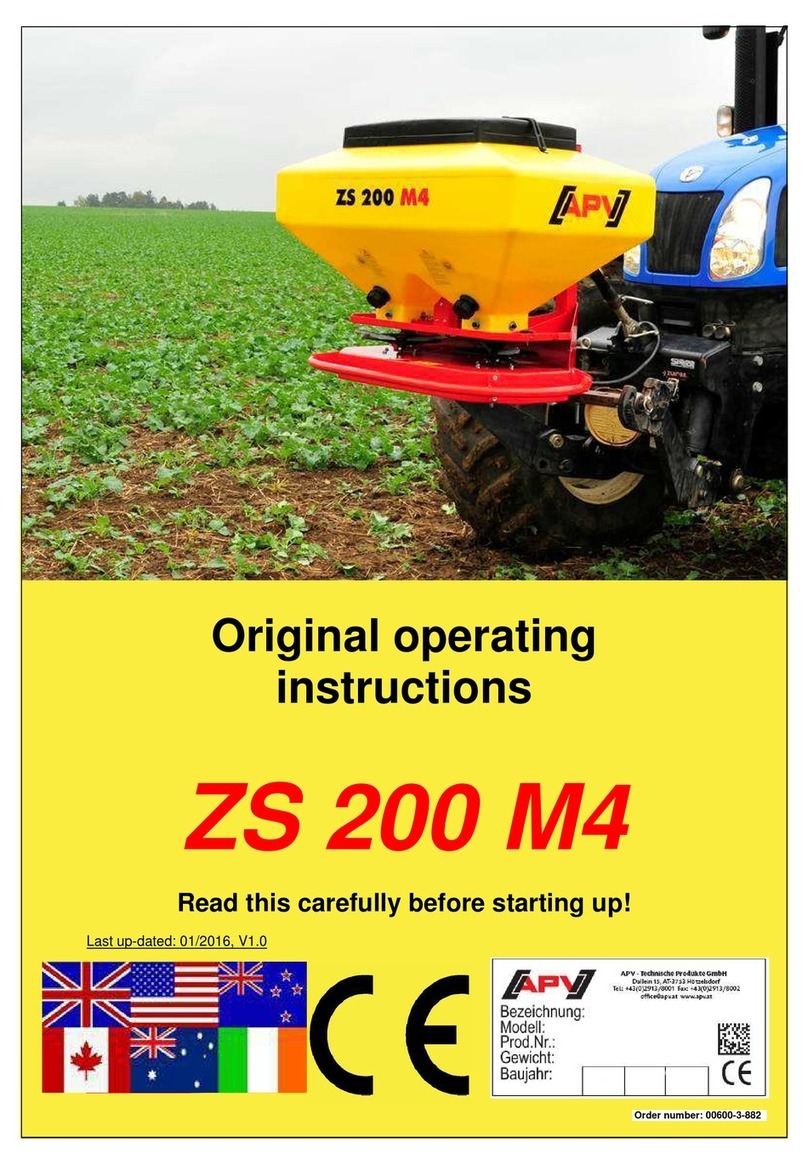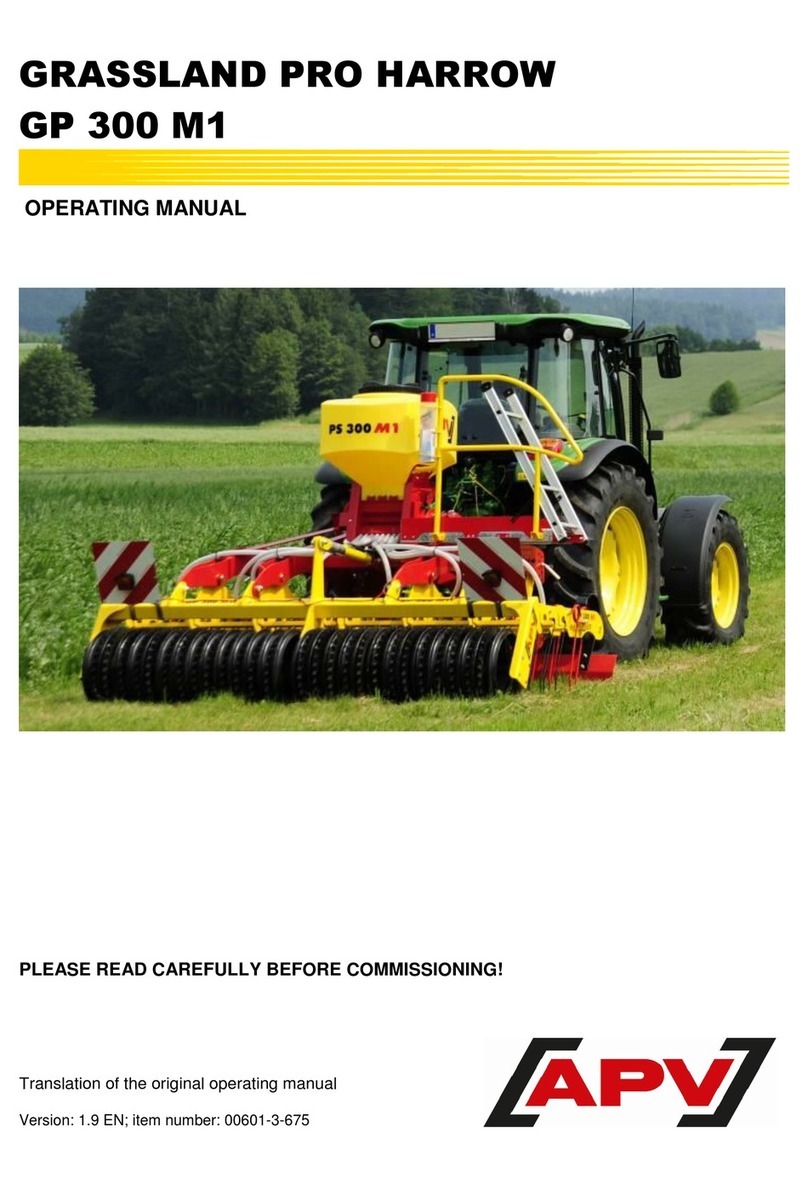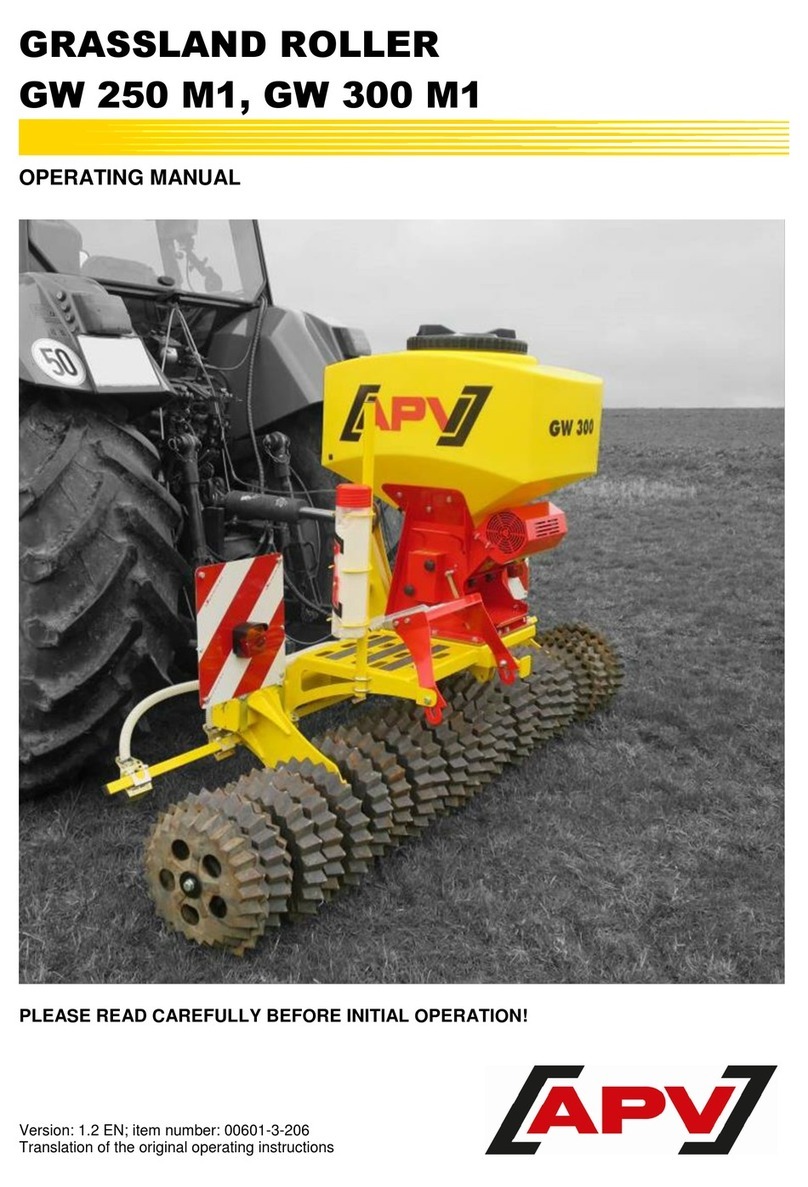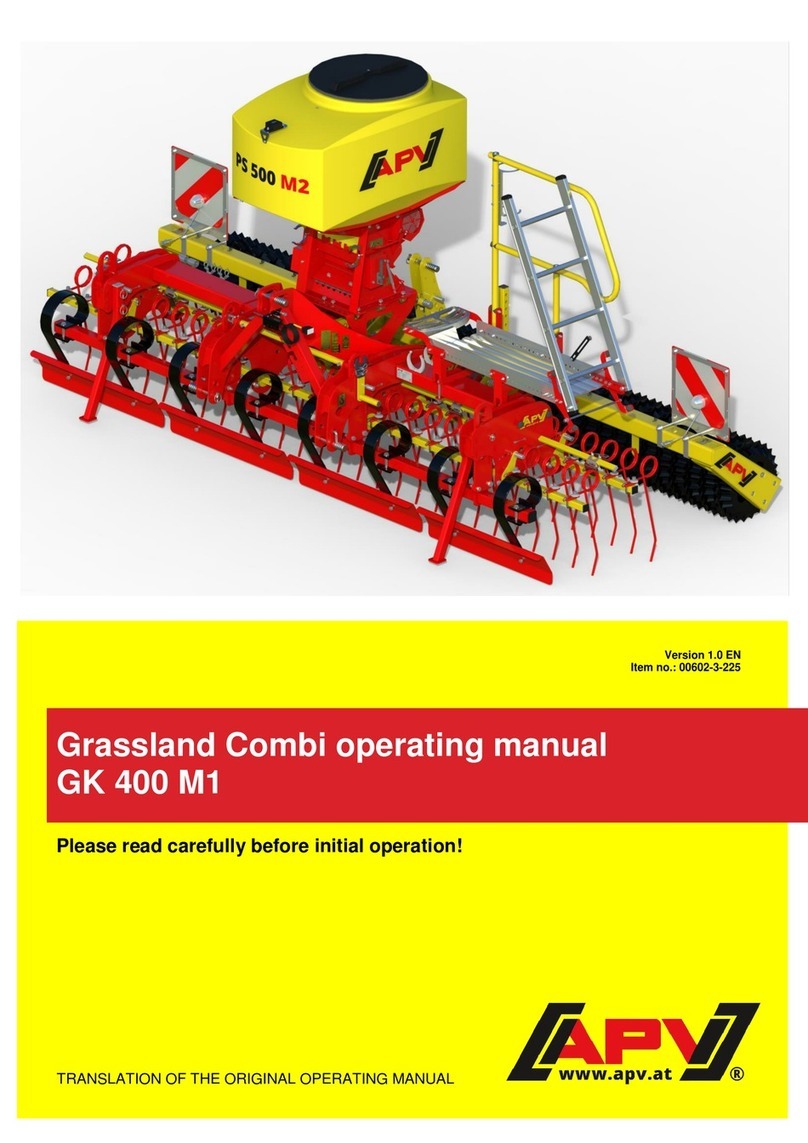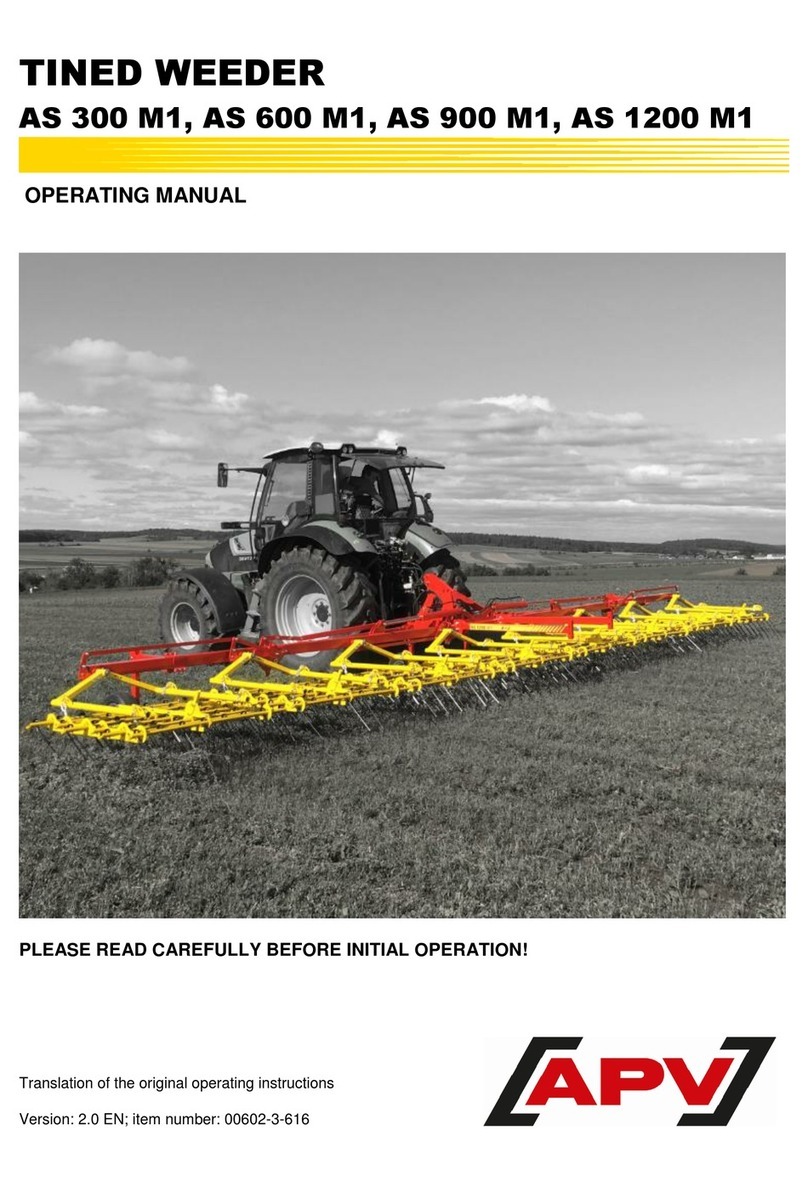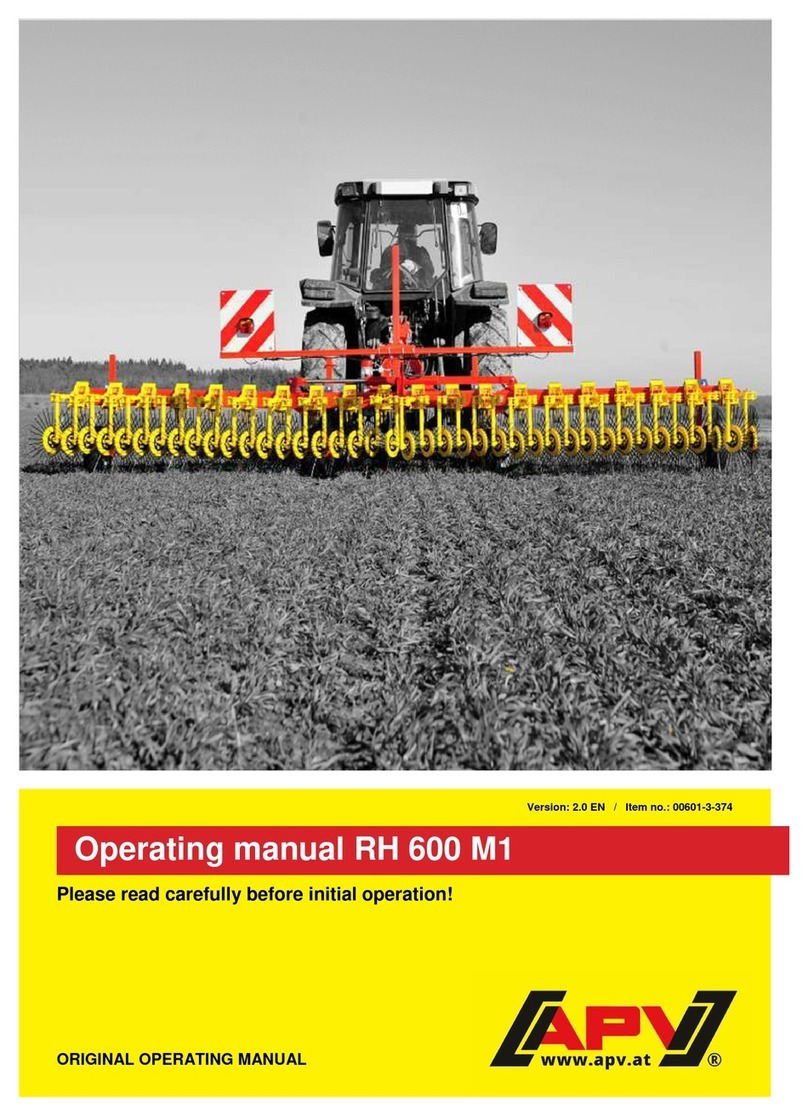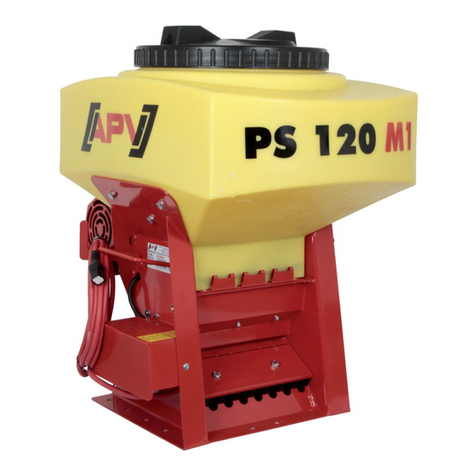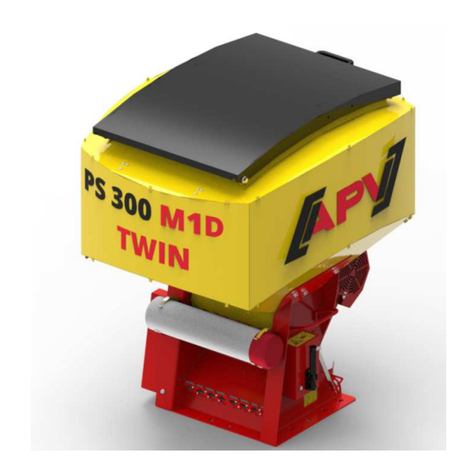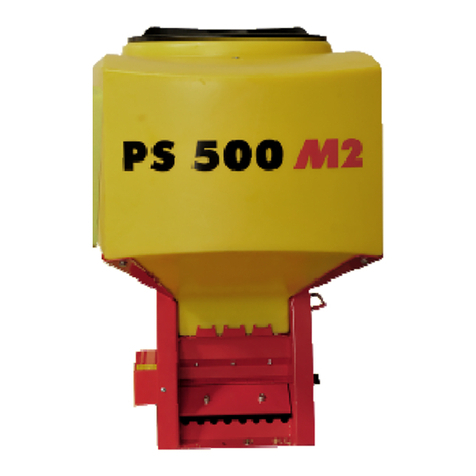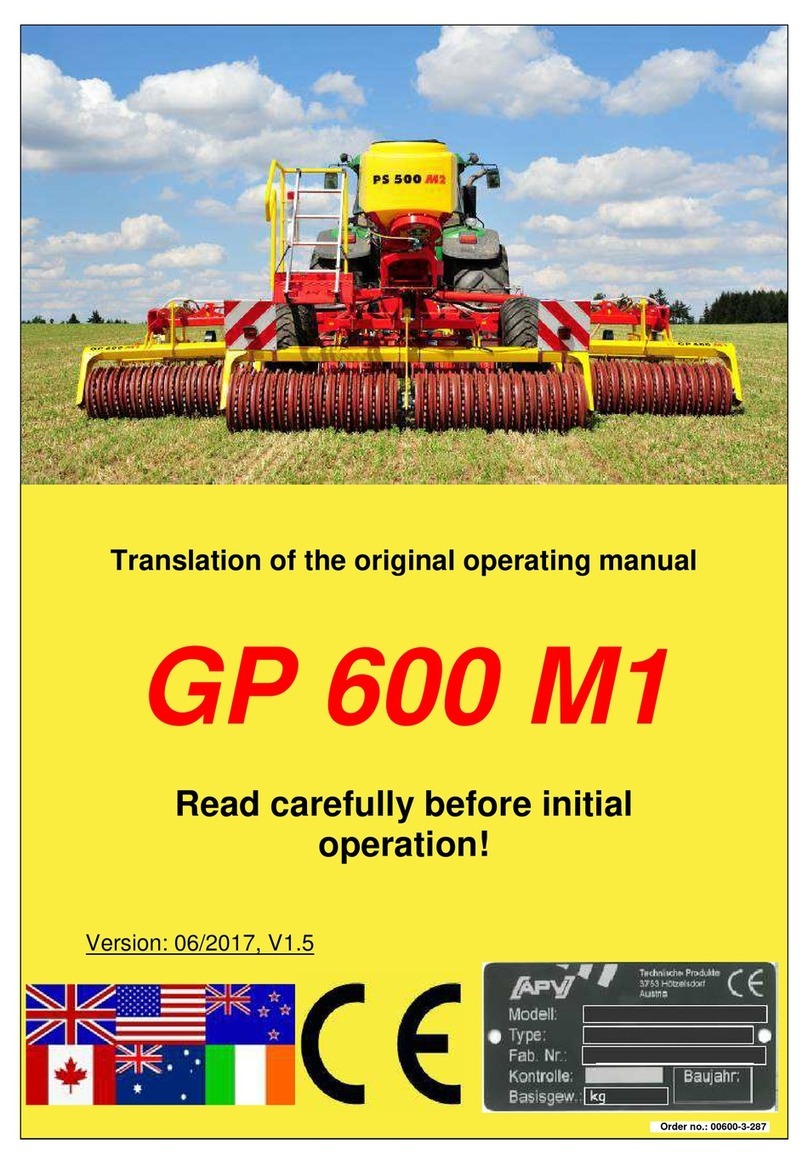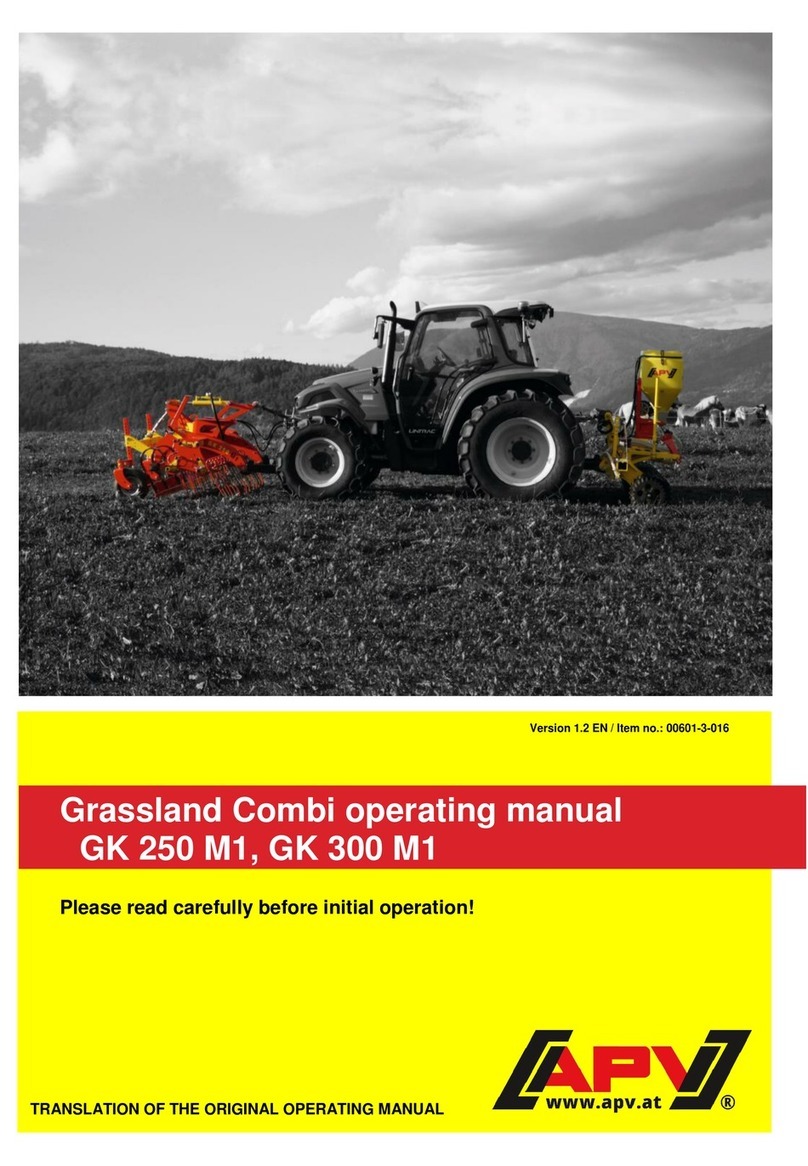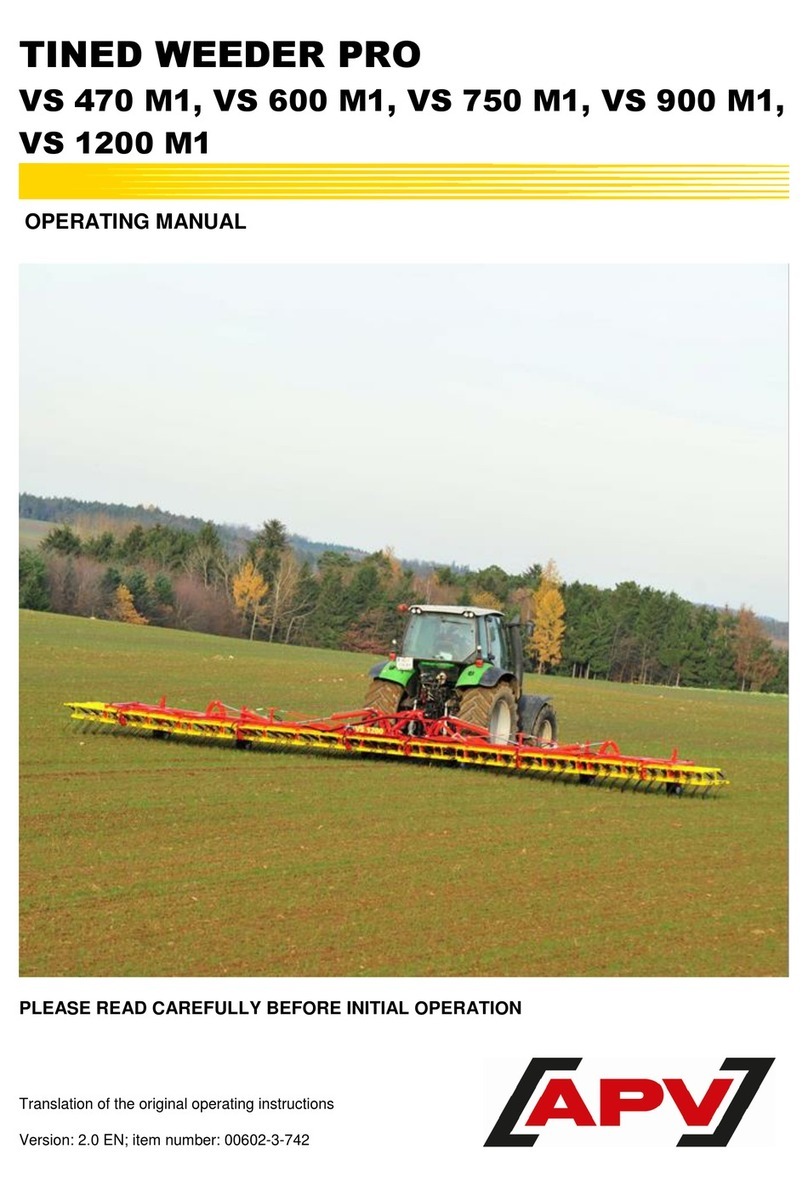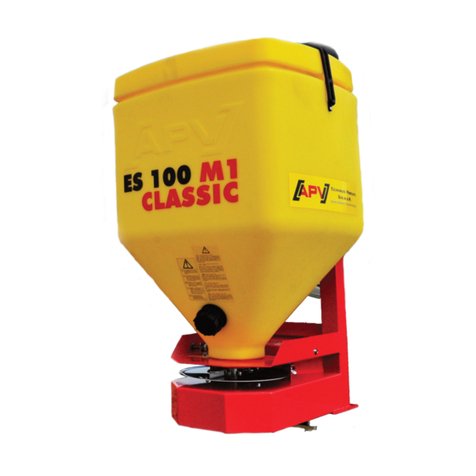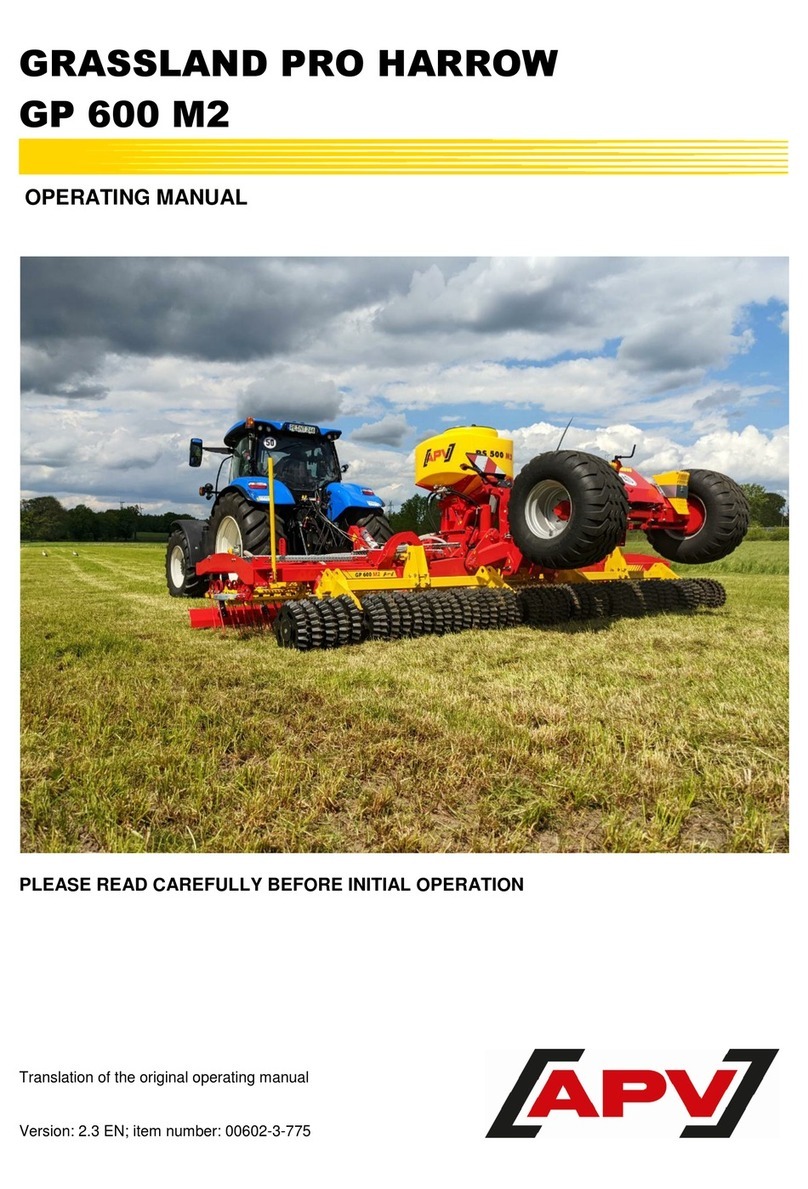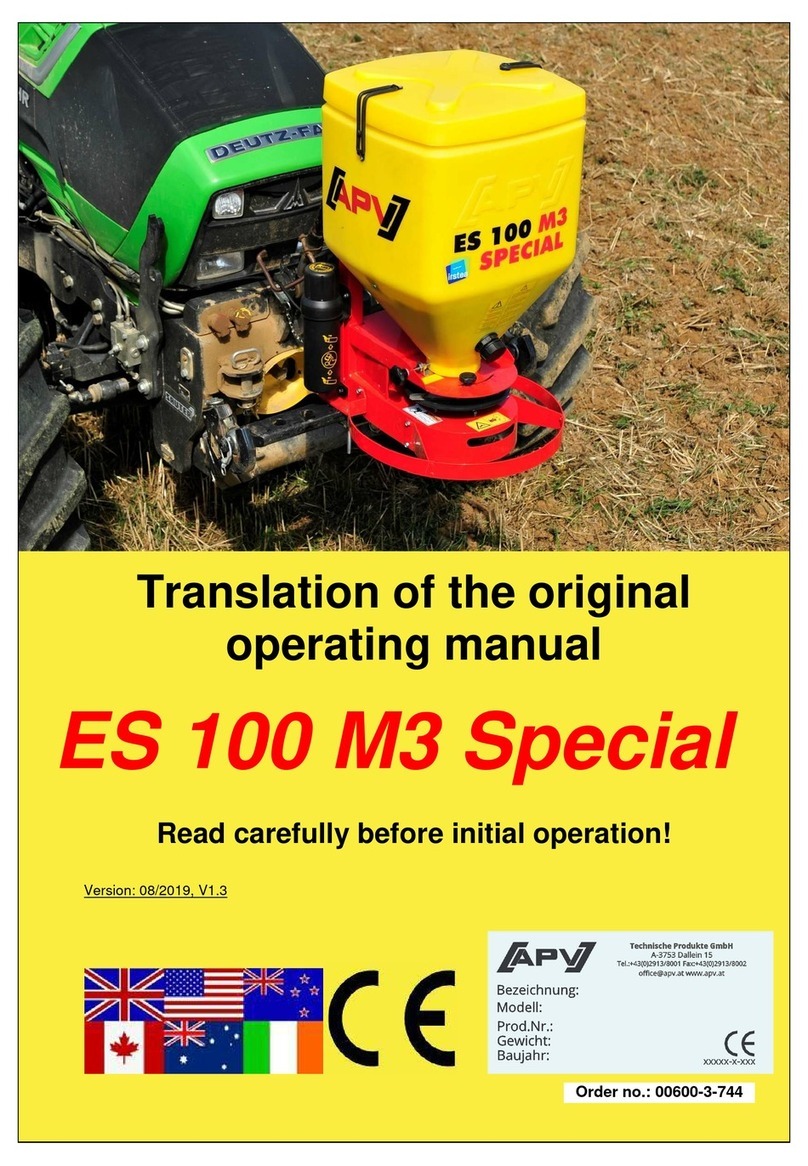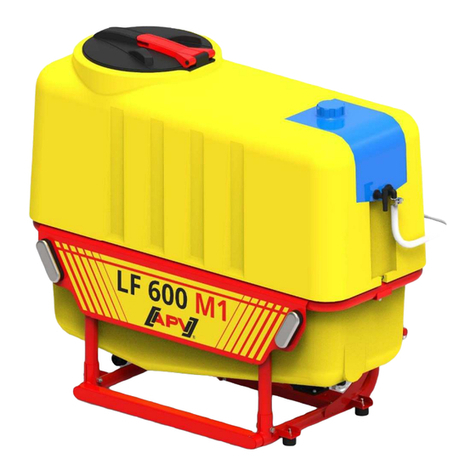
8
6.2 GENERAL SAFETY-RELATED INSTRUCTIONS AND ACCIDENT
PREVENTION REGULATIONS
The operator has read and understood this operating manual before handling the implement.
The operator must train and instruct their personnel. The personnel must have read and
understood this operating manual before handling the implement.
Always keep the operating manual close to the implement for reference purposes.
When passing on the implement, be sure to pass on the operating manual.
Do not use the implement if you are tired or under the influence of drugs, alcohol or medication.
Check the implement and the tractor for road and operational safety before every use (e.g.
defective parts, connections, hoses, protective equipment, etc.)!
Inspections before and during operation as well as regular care and maintenance of the implement
must be performed.
Before starting work, get to know all of the equipment and operating elements as well as their
functions. It is too late to do so during operation!
Observe the generally applicable safety and accident prevention regulations for the respective
country.
Always secure the parked implement against unintentional rolling.
The implement may only be used by persons who are informed of the hazards and who know the
regulations for transport on public roads. The owner/operator is responsible for regularly checking the
user's competence / driver licence.
The warning and information signs applied to the implement provide important instructions for safe
operation, observe them for the sake of your own safety!
The implements must be checked regularly by the operator/user (before each use) for any fractures
and cracks, chafe marks, leaks, loose bolts and connections, vibrations, unusual noises, and for
correct function.
Observe the respective country-specific road traffic regulations when using public roads!
The user should wear close-fitting clothing. Avoid wearing loose clothes!
To reduce the risk of fire: Keep the implements clean!
Before starting up and operating the implement: Check the surrounding area! (Children!) Ensure
sufficient visibility!
Do not, under any circumstances, allow anyone to ride on the implement! The operator must ensure
that no one is riding on the implement before placing the implement in service.
The implement may only be climbed onto with a platform kit.
When using the platform kit, ensure that the implement is at standstill and is lowered onto the ground!
It is forbidden to transport working materials on the implement!
The implement must be coupled according to the instructions and only onto the specified devices!
Special caution is required when coupling and uncoupling implements to or from the towing vehicle!
When mounting and dismounting, put the support devices in their respective positions! (Stability)
Always attach ballast weights at the intended attachment points according to the specifications!
Observe the permissible axle load, total weight and transport dimensions!
Transport equipment - e.g. lighting, warning signs and any protective equipment, must be checked
and mounted!
Triggers for fast couplers must be hanging loosely and must not trigger themselves when lowered.
Never leave the driver's platform while driving!
The driving behaviour, steering and braking capacity are affected by mounted or towed implements
and ballast weights. For this reason, always ensure sufficient steering and braking capacity!
When driving in curves, take account of the wide radius and/or the centrifugal mass of the implement
(pay attention to the minimum turning curve)!
The implement may only be operated when all of the protective devices are installed and in safety
position!
It is forbidden to stand in the working area of the implement!
Do not stand near rotating and swivelling parts of the implement!
Danger due to thrown parts! Observe the safety distance!
